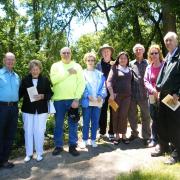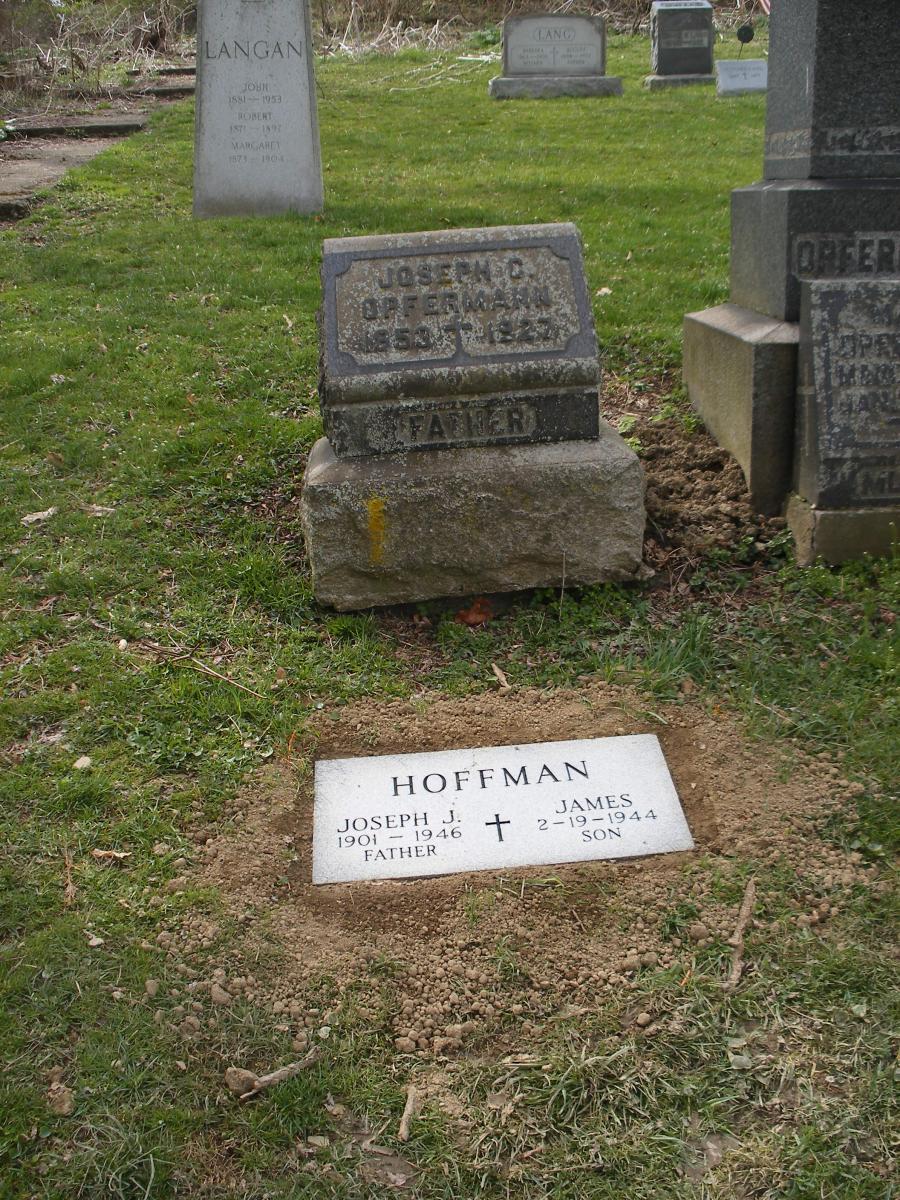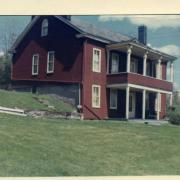Genealogy is all about discovering and telling family stories. I mentioned last week about “getting the genealogy bug” at my Aunt Beverly’s funeral in 2010. We started taking trips to visit cemeteries to take photos and record headstone information that wasn’t readily available back then. I started with St. Anne Cemetery next to the church and school that I had gone to growing up. My Great Grandfather Joseph Opferman was buried there along with my Mom and Dad on the same hillside.
I knew that my Grandmother Anna Opferman Hoffman was buried in the new part of the cemetery further up on the hill since she passed away in 1988. However, I never knew my Grandfather Hoffman because he died unexpectedly when he fell off a roof while helping a friend re-shingle and I wondered where he was buried. My Uncle Ray, who had been only 10 years old at the time told me that he was buried on top of my Great Grandfather Joseph Opferman, but there was no marker for his grave. So I visited the church office and they told me the names of 12 of my relatives who had been buried in the family plot. That led to several interesting stories.
I knew that my Great Grandfather Opferman was instrumental in starting the “new” St. Anne Roman Catholic parish because I always heard that the first Masses were held in his farmhouse. Castle Shannon, where I grew up, was populated at the time primarily by Scots-Irish coal miners who were Presbyterian and German farmers who were Roman Catholic. Since my ancestors had to travel about 4 miles to St. Wendelin’s, the nearest Roman Catholic Church, my Great Grandfather Opferman contacted German priests of the Congregation of the Passion and the first Mass was held on September 15, 1889 “in a little chapel set up in Joseph’s home.” I used to go with my Dad in the 1960s to mow the lawn at Great Aunt Aggie’s, his oldest daughter, and the altar was still there.
Joseph had inherited 50 acres of the original 150-acre farm in Bethel Township. He was prosperous and I learned that he had donated the land for the church, school and cemetery. The church was dedicated in 1892. Since much of the land in the area was undermined, “it is said that the miners refused to dig the coal out from under St. Anne’s Church and school buildings.” I learned that Joseph’s first wife Louisa Averbeck, mother of Great Aunt Aggie, died at age 30 in 1893 and was the very first person buried in that cemetery in that original Opferman family plot. I also learned in 2018 at our DNA relatives’ reunion that his second wife, my Great Grandmother Maria Heggen, had been his housekeeper and nanny for several years after Louisa passed away. He was about 50 and she was 25 years old when they eventually married. My Grandmother was her second child and was only 3 years old when Maria died in her 30s, leaving her step-sister “Aggie,” who was only a teenager at the time, to raise her.
In addition to my Grandfather Hoffman, I was told that their youngest son who died a day after being born in 1944 was also buried in that plot. I remember my Grandmother always being very sad when she recalled what a beautiful baby “James” had been. So I solicited donations from my aunts, uncles and cousins to install a grave marker. We held a dedication ceremony on Memorial Day 2013 with some of my relatives in attendance. It turns out that nearly everyone buried on that hillside is one of my relatives too.



Memorail 2013 w/ my relatives Great Grandfather Hoffman and Uncle Ray Joseph Opferman farmhouse

